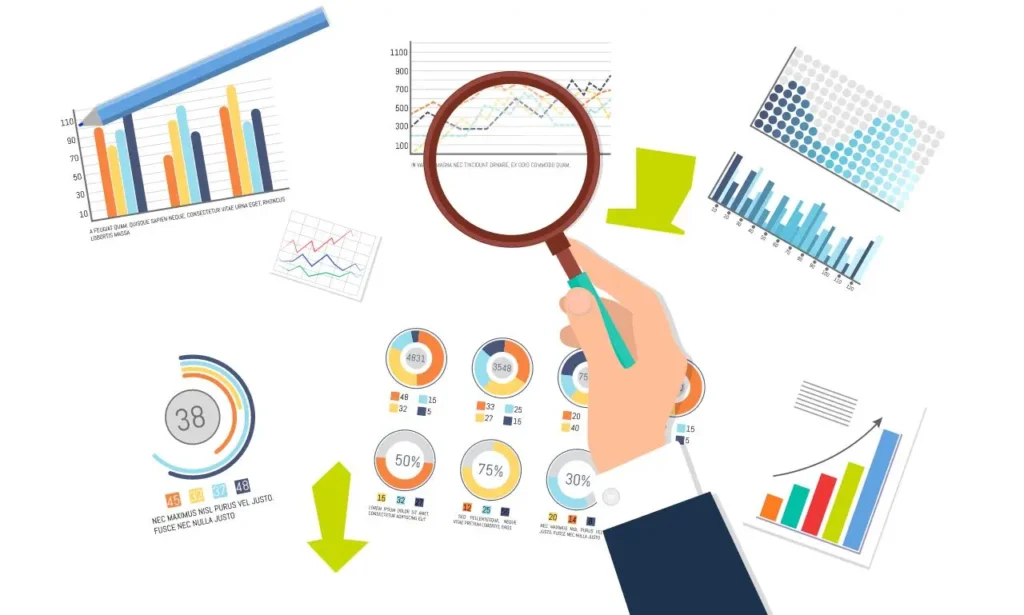Launching an e-commerce business has become more accessible than ever, thanks to platforms like Shopify, which empowers entrepreneurs to turn their dreams into reality. However, the success of your online retail venture depends on finding the right products to sell. Today we will explore how to find products to sell on shopify.
Selecting the right products is a critical factor that can determine the success or failure of your Shopify store. This process requires careful research, strategic planning, and a deep understanding of your target audience. In this comprehensive guide, we will walk you through the essential steps to help you identify and select profitable products to sell on your Shopify store.
Whether you’re just starting your e-commerce journey or seeking to refine your existing offerings, this guide will equip you with the necessary knowledge and strategies to make informed decisions, position your Shopify store for success, and drive sustainable sales on the platform. So, let’s embark on this exciting journey of product discovery and business growth, and learn how to find products to sell on shopify that resonate with your audience.
Researching product trends and demand
When looking to sell products on Shopify, it’s crucial to research product trends and demand. Follow these steps and strategies to effectively conduct product research:

- Keyword Research:
- Utilize keyword research tools like Google Keyword Planner, SEMrush, or Ahrefs to identify trending keywords and search terms related to your niche.
- Look for long-tail keywords that may indicate specific product demand within your chosen niche.
- Google Trends:
- Visit Google Trends to explore the popularity of specific keywords and search terms over time. You can filter by region and time frame to identify seasonal trends.
- Social Media Platforms:
- Monitor social media platforms like Instagram, Facebook, Twitter, and Pinterest to identify trending products and hashtags within your niche.
- Engage with relevant communities and groups to gain insights into what products are currently popular or in demand.
- E-commerce Marketplaces:
- Explore popular e-commerce platforms such as Amazon, eBay, and Etsy to see what products are bestsellers in your niche.
- Pay attention to product reviews and customer feedback to understand consumer preferences.
- Trend Forecasting Websites:
- Visit trend forecasting websites like TrendHunter and WGSN to get insights into upcoming trends in various industries.
- These platforms often provide reports, articles, and visuals that can help you stay ahead of the curve.
- Competitor Analysis:
- Analyze your competitors’ Shopify stores and product offerings. Tools like SpyFu or SimilarWeb can help you gain insights into their traffic sources and popular products.
- Look for gaps in the market or products that have high demand but are not well-served by your competitors.
- Industry Publications and Blogs:
- Read industry-specific publications and blogs to stay informed about emerging trends, consumer preferences, and market shifts.
- Subscribe to newsletters or follow influencers in your niche for regular updates.
- Consumer Surveys and Feedback:
- Conduct surveys or interviews with your target audience to understand their needs, preferences, and pain points.
- Use feedback from existing customers to refine your product selection and offerings.
- Google Alerts:
- Set up Google Alerts for keywords related to your niche. You’ll receive email notifications whenever new content related to those keywords is published online.
- Market Research Tools:
- Consider using market research tools such as MarketResearch.com, Statista, or Nielsen to access industry reports, consumer behavior data, and market trends.
- Trade Shows and Conferences:
- Attend industry-specific trade shows, exhibitions, and conferences to network with industry experts and discover emerging products and trends.
- Analyzing Seasonality:
- Recognize and account for seasonality in your niche. Some products may have strong demand during specific times of the year, such as holidays or seasons.
- Global Events and News:
- Stay updated on global events, news, and societal shifts that may impact consumer behavior and product trends. This includes changes in technology, health, and cultural trends.
It’s important to keep in mind that product trends can change quickly, so it’s crucial to remain flexible and adjust to evolving consumer preferences. Make it a habit to regularly review your product research to ensure that your Shopify store offers products that are in demand and match your target audience’s needs and interests.
Market Research: How to Find Products to Sell on Shopify
Conducting market research is a crucial process that involves collecting, examining, and making sense of data about your target market, industry, and potential clients. By doing so, you can make informed decisions regarding your products, marketing strategies, and business outlook. Here is a comprehensive guide on how to conduct market research:

Define Your Research Objectives
Clarify the specific goals and objectives of your market research. What do you want to learn or achieve through this research?
Identify Your Target Market
- Demographics – Gather data on age, gender, income, education, occupation, and other demographic factors that define your potential customers.
- Psychographics – Understand the interests, lifestyles, values, and attitudes of your target audience. C. Geographics – Determine the geographic locations and regions where your target market is concentrated.
Market Size and Growth Potential
- Estimate Market Size – Calculate the total addressable market (TAM) to understand the potential size of your market.
- Assess Market Growth – Analyze historical market trends and projections to assess whether the market is growing, shrinking, or stable.
Competitor Analysis
- Identify Key Competitors – List and profile your direct and indirect competitors in the industry.
- Analyze Competitor Strengths and Weaknesses – Evaluate their product offerings, pricing strategies, marketing efforts, and customer reviews.
- Identify Market Gaps – Determine if there are underserved or unaddressed segments of the market that you can target.
Customer Behavior and Preferences
- Consumer Surveys – Create and conduct surveys to gather insights into customer preferences, pain points, and buying habits.
- Interviews and Focus Groups – Conduct one-on-one interviews or group discussions to gain qualitative insights from potential customers.
- Online Reviews and Social Media Monitoring – Analyze online reviews, comments, and social media discussions related to your industry and products.
- Market Trends and Industry Analysis A. Industry Reports – Access industry-specific reports and publications that provide data on market trends, challenges, and opportunities.
- Trade Associations – Join industry-related trade associations to access valuable market information and network with professionals.
- Technological Advancements – Stay informed about emerging technologies that may impact your industry and products.
Regulatory and Legal Considerations
- Research and understand any regulatory requirements, certifications, or licenses needed for your products or industry.
SWOT Analysis
- Conduct a SWOT analysis (Strengths, Weaknesses, Opportunities, Threats) to assess your business’s internal and external factors.
Data Collection and Analysis
- Collect and organize the data you’ve gathered through surveys, interviews, online research, and other sources.
- Use statistical tools and data analysis techniques to draw meaningful conclusions and insights from the data.
Market Research Report
Compile your findings into a comprehensive market research report that includes key insights, trends, customer profiles, and recommendations.
Decision Making
Use the research findings to make informed decisions about product selection, pricing, marketing strategies, and business planning.
Ongoing Research
Market research is not a one-time activity. Continuously monitor market trends and customer feedback to adapt your business strategies over time.
Effective market research is crucial for reducing risks, identifying opportunities, and building a successful Shopify business that caters to the needs and preferences of the target market.
Product Sourcing
As an online store owner, finding and acquiring the right products to sell is a critical aspect of your business. This process is known as product sourcing. It doesn’t matter if you sell physical products, digital goods, or services – effective product sourcing is essential for your success. To help you achieve this, here’s a detailed guide on how to approach product sourcing:

Define Your Product Strategy
- Product Type – Determine whether you want to sell physical products, digital products, or offer services.
- Niche and Target Audience – Identify your niche and target audience to guide your product selection.
Product Selection
- Identify Potential Products – Research and brainstorm potential products that align with your niche and target audience.
- Evaluate Product Demand – Use market research to assess the demand for the products you’re considering.
- Competitor Analysis – Analyze competitors’ product offerings and pricing to identify gaps or opportunities.
- Consider Seasonality – Account for seasonality if certain products have higher demand during specific times of the year.
Sourcing Options
Dropshipping
- Define dropshipping and its benefits.
- Research and identify reliable dropshipping suppliers.
- Set up a dropshipping arrangement with chosen suppliers.
Creating Your Own Products
- Product Development – Decide whether to manufacture your products or create them by hand.
- Prototype and Testing – Develop prototypes and test product samples before mass production.
Print on Demand
- Understand the print-on-demand model.
- Research and choose suitable print-on-demand partners.
Supplier Relations
- Supplier Selection – Assess suppliers based on factors like product quality, pricing, shipping times, and customer service.
- Supplier Agreements – Establish clear agreements with suppliers, including pricing, terms, and return policies.
- Quality Control – Implement quality control measures to ensure products meet your standards.
Inventory Management
- A. Stocking Inventory – If you’re not using dropshipping, manage inventory levels to avoid stockouts and overstocking.
- B. Inventory Tracking – Use inventory management software or tools to track stock levels and sales.
Pricing Strategy
- Cost Analysis – Calculate the cost of goods sold (COGS) to determine pricing.
- Competitive Pricing – Research competitors’ prices and set competitive yet profitable prices.
- Discounts and Promotions – Plan for discounts, promotions, and bundling strategies.
Logistics and Shipping
- Shipping Partners – Establish partnerships with reliable shipping carriers or fulfillment centers.
- Shipping Policies – Set clear shipping policies, including shipping costs, delivery times, and tracking options.
- International Shipping – Consider international shipping options and customs requirements.
Legal and Compliance
- Business Licensing – Ensure you have the necessary licenses and permits for your product type and location.
- Product Compliance – Verify that your products meet safety and regulatory standards.
- Contracts and Agreements – Create contracts and agreements with suppliers and partners to protect your business.
Product Listings on Shopify
- Create Product Listings – Write compelling product descriptions and upload high-quality images.
- Product Categorization – Organize products into relevant categories and collections on your Shopify store.
Customer Support and Returns
- Customer Support – Establish clear communication channels for customer inquiries and support.
- Return Policies – Create return and refund policies that are fair to customers and protect your business.
Continuous Evaluation and Adaptation
- Regularly assess your product sourcing strategies, supplier relationships, and product performance. Make necessary adjustments to optimize your offerings.
Scaling Your Product Catalog
- As your business grows, consider expanding your product catalog to meet customer demands and explore new opportunities.
Product Validation
Product validation is an important step in the process of finding and selling products on Shopify. It involves testing and assessing the viability of your chosen products before committing significant resources to them. Validating your products ensures that you offer items that have a demand in the market and that customers are willing to purchase. The following is a detailed guide on how to effectively validate your products:

Minimum Viable Product (MVP) Development
Prototype or Sample
- Create a prototype or sample of the product you intend to sell.
- Ensure it represents the final product in terms of quality and functionality.
Testing and Feedback
- Share the prototype/sample with a small group of potential customers or focus groups.
- Gather feedback on the product’s design, usability, and any potential improvements needed.
Market Testing
A. Soft Launch
- Create a small-scale online presence for your product, such as a limited product listing on your Shopify store.
- Advertise the product to a selected audience or a small email list.
B. Data Collection
- Track key performance indicators (KPIs) such as website traffic, click-through rates, and conversions.
- Collect customer feedback and reviews on the product.
A/B Testing – Conduct A/B tests with different product variations or marketing strategies to identify what works best.
Analysis of Results
- Sales and Conversion Rates – Evaluate the sales data and conversion rates to determine the product’s appeal.
- Customer Feedback – Analyze feedback from customers to identify common concerns or suggestions for improvement.
- Competitive Analysis – Assess how your product performs compared to competitors in terms of pricing and customer reviews.
- Cost vs. Revenue – Calculate whether the product’s revenue covers the costs, including product sourcing, marketing, and operational expenses.
Adjustments and Iterations
- Product Improvement – Incorporate feedback and make necessary improvements to the product’s design, quality, or features.
- Marketing and Messaging – Refine your marketing strategies, messaging, and product positioning based on customer feedback and performance data.
- Pricing Strategy – Adjust pricing if necessary to better align with customer expectations and market demand.
- Scaling or Pivoting – Decide whether to scale up production and marketing efforts or pivot to a different product or strategy based on the validation results.
Re-Validation
- Repeat the Process – If significant changes are made, consider re-validating the product with an updated MVP and market testing.
- Continuous Monitoring – Continuously monitor product performance, customer feedback, and market trends to adapt and optimize over time.
Documentation and Insights
- Keep records of the entire validation process, including feedback, data, and any adjustments made. These insights can inform future product sourcing and business decisions.
Decision Making
- Based on the validation results, make an informed decision about whether to proceed with selling the product on your Shopify store, make further improvements, or explore different product opportunities.
It is crucial to keep validating your products continuously and be open to customer feedback and market changes. By thoroughly testing and evaluating your products, you can increase the chances of a successful launch on your Shopify store.
Pricing Strategy

Understand Your Costs
- Cost of Goods Sold (COGS) – Calculate the direct costs associated with producing or sourcing your products.
- Operating Expenses – Factor in overhead costs, including rent, utilities, marketing, and employee wages.
- Profit Margin – Determine the profit margin you want to achieve to ensure profitability.
Market Research
- Competitor Analysis 1. Research competitors’ pricing for similar products. 2. Identify where your prices stand compared to the competition.
- Customer Surveys and Feedback – Gather customer insights on their price sensitivity and expectations.
Pricing Strategies
- Cost-Plus Pricing – Add a markup to your COGS to determine the selling price.
- Competitive Pricing – Set prices in line with or slightly below competitors’ prices to attract price-conscious customers.
- Value-Based Pricing – Determine pricing based on the perceived value of your product to the customer.
- Psychological Pricing – Use pricing psychology techniques like setting prices just below a round number ($9.99 instead of $10) to influence perception.
- Dynamic Pricing – Adjust prices based on demand, time of day, or other variables.
- Bundle Pricing – Offer discounts when customers buy multiple items together.
- Discount Pricing – Offer promotions, flash sales, or discounts to incentivize purchases.
Pricing Tiers and Options
- Tiered Pricing – Offer different price points for the same product with varying features or quantities.
- Subscription Models – Consider subscription-based pricing for recurring revenue.
- Add-Ons and Upsells – Offer additional products or services as upsells to increase the average transaction value.
Dynamic Pricing
- Algorithmic Pricing – Use pricing algorithms and software to dynamically adjust prices based on market conditions and competitor pricing.
- Demand-Based Pricing – Increase prices during periods of high demand and lower them during slower seasons.
- Personalized Pricing – Offer individualized pricing to different customer segments based on their behavior and purchase history.
Profitability Analysis
- Break-Even Point – Calculate the sales volume required to cover all costs and reach profitability.
- Profit Projections – Estimate potential profits based on different pricing scenarios and sales forecasts.
- Monitor and Adjust – Continuously analyze sales and profit data to make pricing adjustments as needed.
Transparency and Communication
- Clear Pricing Display – Ensure that prices are prominently displayed on your Shopify store.
- Effective Communication – Explain the value customers receive at different price points.
Legal and Ethical Considerations
- Pricing Regulations – Be aware of any pricing regulations or laws in your industry or location.
- Fair and Honest Pricing – Maintain transparency and avoid deceptive pricing practices.
Competitive Advantage
- Evaluate how your pricing strategy contributes to your overall competitive advantage in the market.
Testing and Optimization
- A/B Testing – Experiment with different pricing strategies and measure their impact on sales and profitability.
- Customer Feedback – Solicit feedback from customers on your pricing and be open to making adjustments based on their input.
Long-Term Pricing Strategy
- Develop a pricing strategy that aligns with your long-term business goals, considering factors like growth, brand positioning, and customer loyalty.
It’s important to remember that pricing is an ongoing process. It’s crucial to regularly monitor your pricing strategy, stay attuned to market changes, and be willing to adapt as necessary to maintain competitiveness and profitability on your Shopify store.
Additional Tips
- Learn how to seamlessly connect your Shopify store to Instagram with our step-by-step guide: How to Connect Shopify to Instagram.
- Want to enhance your Pinterest e-commerce strategy? Check out our detailed guide on How to Add Add to Cart in Pinterest Shopify.
- Need to update your Shopify store’s name? Find out how with our comprehensive guide on How to Change Shopify Store Name.
- Tired of shipping costs calculated at checkout? Learn how to remove this feature in Shopify with our guide: How to Remove Shipping Calculated at Checkout Shopify.
These will help you navigate and optimize various aspects of your Shopify store.
Conclusion
In conclusion, discovering how to find products to sell on shopify store is a complex process that demands meticulous planning, extensive research, and strategic decision-making. It involves gaining a deep understanding of your target audience, evaluating market demand, and ensuring that your pricing strategy is in line with your business objectives.

